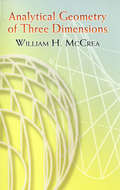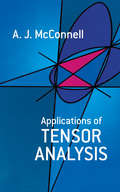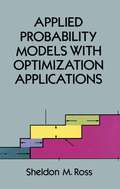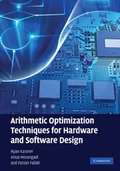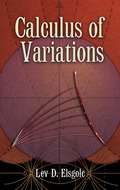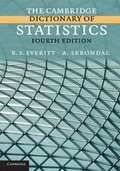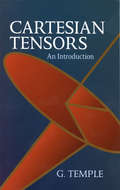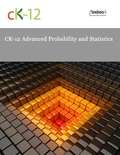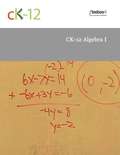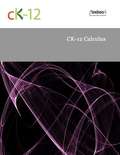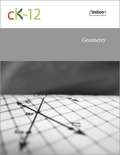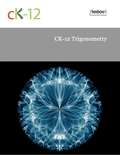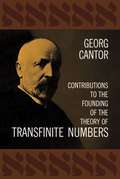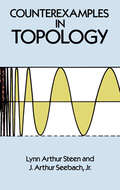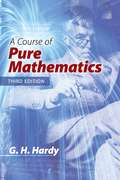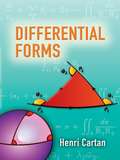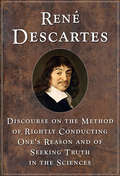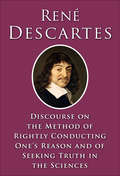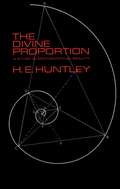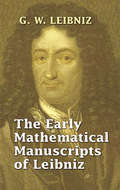- Table View
- List View
الأخلاق والسير في مداواة النفوس
by أبي محمد علي بن حزم الأندلسي الظاهريقد جمعت في كتابي هذا معان كثيرة أفادنيها واهب التمييز تعالى بمرور الأيام وتعاقب الأحوال بما منحني عز وجل من التهمم بتصاريف الزمان والإشراف على أحواله حتى أنفقت في ذلك أكثر عمري وآثرت تقييد ذلك بالمطالعة له والفكرة فيه على جميع اللذات التي تميل إليها أكثر النفوس وعلى الازدياد من فضول المال ورقمت كل ما سبرت من ذلك بهذا الكتاب لينفع الله تعالى به من شاء من عباده ممن يصل إليه ما أتعبت فيه نفسي واجهدتها فيه واطلت فيه فكري فيأخذه عفوا وأهديته إليه هنيئا فيكون ذلك أفضل له من كنوز المال وعقد الأملاك إذا تدبره ويسره الله تعلي لاستعماله. وانا راج في ذلك من الله تعالي أعظم الأجر لنيتي في نفع عباده وإصلاح ما فسد من أخلاقهم ومداواة علل نفوسهم وبالله تعالى استعين وحسبنا الله ونعم الوكيل
ABC's of Science
by Charles A. OliverThis books is about alpha, beta, and gamma. These are the first three letters of the Greek alphabet. <P> <P> This alphabet was the major method of written communication in ancient times, and is of course still used today. The Greek letters are also the most commonly used symbols in science. In all branches of science, we use symbols to represent ideas and definitions. Symbols serve to simplify communication and calculations—once you get used to them, that is.
Analytical Geometry of Three Dimensions: Second Revised Version
by William H. McCreaBrief but rigorous, this text is geared toward advanced undergraduates and graduate students. It covers the coordinate system, planes and lines, spheres, homogeneous coordinates, general equations of the second degree, quadric in Cartesian coordinates, and intersection of quadrics.Mathematician, physicist, and astronomer, William H. McCrea conducted research in many areas and is best known for his work on relativity and cosmology. McCrea studied and taught at universities around the world, and this book is based on a series of his lectures.
Applications of Tensor Analysis (Dover Books on Mathematics)
by A. J. McConnellThis standard work applies tensorial methods to subjects within the realm of advanced college mathematics. In its four main divisions, it explains the fundamental ideas and the notation of tensor theory; covers the geometrical treatment of tensor algebra; introduces the theory of the differentiation of tensors; and applies mathematics to dynamics, electricity, elasticity, and hydrodynamics.Partial contents: algebraic preliminaries (notation, definitions, determinants, tensor analysis); algebraic geometry (rectilinear coordinates, the plane, the straight line, the quadric cone and the conic, systems of cones and conics, central quadrics, the general quadric, affine transformations); differential geometry (curvilinear coordinates, covariant differentiation, curves in a space, intrinsic geometry of a surface, fundamental formulae of a surface, curves on a surface); applied mathematics (dynamics of a particles, dynamics of rigid bodies, electricity and magnetism, mechanics of continuous media, special theory of relativity).
Applied Probability Models with Optimization Applications
by Sheldon M. Ross"A clarity of style and a conciseness of treatment which students will find most welcome. The material is valuable and well organized ... an excellent introduction to applied probability." -- Journal of the American Statistical Association. This book offers a concise introduction to some of the stochastic processes that frequently arise in applied probability. Emphasis is on optimization models and methods, particularly in the area of decision processes. After reviewing some basic notions of probability theory and stochastic processes, the author presents a useful treatment of the Poisson process, including compound and nonhomogeneous Poisson processes. Subsequent chapters deal with such topics as renewal theory and Markov chains; semi-Markov, Markov renewal, and regenerative processes; inventory theory; and Brownian motion and continuous time optimization models.Each chapter is followed by a section of useful problems that illustrate and complement the text. There is also a short list of relevant references at the end of every chapter. Students will find this a largely self-contained text that requires little previous knowledge of the subject. It is especially suited for a one-year course in applied probability at the advanced undergraduate or beginning postgraduate level. 1970 edition.
Arithmetic Optimization Techniques for Hardware and Software Design
by Ryan Kastner Anup Hosangadi Farzan FallahObtain better system performance, lower energy consumption, and avoid hand-coding arithmetic functions with this concise guide to automated optimization techniques for hardware and software design. High-level compiler optimizations and high-speed architectures for implementing FIR filters are covered, which can improve performance in communications, signal processing, computer graphics, and cryptography. Clearly explained algorithms and illustrative examples throughout make it easy to understand the techniques and write software for their implementation. Background information on the synthesis of arithmetic expressions and computer arithmetic is also included, making the book ideal for new-comers to the subject. This is an invaluable resource for researchers, professionals, and graduate students working in system level design and automation, compilers, and VLSI CAD.
Calculus of Variations
by Lev D. ElsgolcThis concise text offers both professionals and students an introduction to the fundamentals and standard methods of the calculus of variations. In addition to surveys of problems with fixed and movable boundaries, it explores highly practical direct methods for the solution of variational problems.Topics include the method of variation in problems with fixed boundaries; variational problems with movable boundaries and other problems; sufficiency conditions for an extremum; variational problems of constrained extrema; and direct methods of solving variational problems. Each chapter features numerous illustrative problems, and solutions appear at the end.
The Cambridge Dictionary of Statistics
by B. S. Everitt A. SkrondalIf you work with data and need easy access to clear, reliable definitions and explanations of modern statistical and statistics-related concepts, then look no further than this dictionary. Nearly 4000 terms are defined, covering medical, survey, theoretical, and applied statistics, including computational and graphical aspects. Entries are provided for standard and specialized statistical software. In addition, short biographies of over 100 important statisticians are given. Definitions provide enough mathematical detail to clarify concepts and give standard formula when these are helpful. The majority of definitions then give a reference to a book or article where the user can seek further or more specialized information, and many are accompanied by graphical material to aid understanding.
Cartesian Tensors: An Introduction (Dover Books on Mathematics)
by G. TempleThis undergraduate text provides an introduction to the theory of Cartesian tensors, defining tensors as multilinear functions of direction, and simplifying many theorems in a manner that lends unity to the subject. The author notes the importance of the analysis of the structure of tensors in terms of spectral sets of projection operators as part of the very substance of quantum theory. He therefore provides an elementary discussion of the subject, in addition to a view of isotropic tensors and spinor analysis within the confines of Euclidean space. The text concludes with an examination of tensors in orthogonal curvilinear coordinates. Numerous examples illustrate the general theory and indicate certain extensions and applications. 1960 edition.
CK-12 Advanced Probability and Statistics
by Ck-12 FoundationCK-12 Foundation's Advanced Probability and Statistics FlexBook covers the following chapters: An Introduction to Analyzing Statistical Data - Students learn definitions of statistical terminology, and review data, measures of center, and measures of spread. Visualizations of Data - histograms and frequency distributions, common graphs and data plots, and box-and-whisker plots. An Introduction to Probability - events, sample spaces, probability, compound events, the complement of an event, conditional probability, and basic counting rules. Discrete Probability Distribution - random variables, probability distribution for a discrete random variable, mean and standard deviation of discrete random variables and the Binomial Probability Distribution. Normal Distribution - standard normal probability distribution, the density curve of the normal distribution, and applications of the normal distribution. Planning and Conducting an Experiment or Study - surveys, sampling and experimental design. Sampling Distributions and Estimations - sampling distributions and the Central Limit Theorem. Hypothesis Testing - The P-value, testing a proportion hypothesis, testing a mean hypothesis, and testing a hypothesis for dependent and independent samples. Regression and Correlation - scatterplots and linear correlation, Least-Squares regression, inferences about regression, and an introduction to multiple regression. Chi-Square- the Goodness-of-Fit test, test of independence, and testing one variance. Analysis of Variance and the F-Distribution - the F-Distribution and testing two variances, the One-Way ANOVA test, and the Two-Way ANOVA test. Non Parametric Statistics - nonparametric statistics, the rank sum test and rank Correlation, and the Kruskal-Wallis test.
CK-12 Advanced Probability and Statistics Second Edition Volume 1
by Ck-12 FoundationAn open source textbook.
CK-12 Algebra I
by Ck-12 FoundationCK-12 Foundation's Algebra FlexBook is an introduction to algebraic concepts for the high school student. Topics include: Equations & Functions, Real Numbers, Equations of Lines, Solving Systems of Equations & Quadratic Equations.
CK-12 Calculus
by Ck-12 FoundationCK-12 Foundation's Single Variable Calculus FlexBook covers the following chapters: Functions, Limits, and Continuity - A review of the basics of functions is given. Students use linear approximations to study the limit process, before a more formal treatment of limits is given. Differentiation - Students explore instantaneous rate of change, and the relationship between continuity and differentiability. The Chain Rule and implicit differentiation are reviewed. Applications of Derivatives - Students gain practice with using the derivatives in related rates problems. Additional topics include The First Derivative Test, The Second Derivative Test, limits at infinity, optimization, and approximation errors. Integration - This chapter includes indefinite integrals calculus, initial value problems, definite integrals, the Fundamental Theorem of Calculus, integration by substitution, and numerical integration. Applications of Integration - This chapter includes applications of the definite integral, such as calculating areas between two curves, volumes, length of curves, and other real-world applications in physics and statistics. Transcendental Functions - This chapter includes differentiation and integration of logarithmic and exponential functions, exponential growth and decay, derivatives and integrals involving inverse trigonometric functions, and L'Hospital's Rule. Integration Techniques - Students explore integration by substitution, integration by parts, integration by partial fractions, trigonometric integrals, trigonometric substitutions, and improper integrals. Infinite Series - This chapter introduces the study of sequences and infinite series. The properties presented describe the behavior of a sequence or series, including whether a sequence approaches a number or an infinite series adds to a number.
CK-12 Geometry
by Ck-12 FoundationCK-12 Foundation's Geometry FlexBook covers the following chapters: Basics of Geometry - undefined terms, defined terms, basic postulates of points, lines and planes; distances on a coordinate grid; complementary and supplementary angles; vertical angles; linear pairs and classification of polygons. Reasoning and Proof - inductive reasoning, deductive reasoning, conditional statements, properties of equality and two-column proofs. Parallel and Perpendicular Lines - the parallel line postulate, the perpendicular line postulate, and angles formed by two parallel lines and a non-perpendicular transversal. Congruent Triangles - the Triangle Sum theorem, triangle congruence, the SSS and ASA postulates, the AAS congruence theorem, two-column and flow proofs, the HL congruence theorem, AAA and SSA relationships, isosceles and equilateral triangles. Relationships Within Triangles - the midsegment theorem, the perpendicular bisector theorem, the angle bisector theorem, the concurrency of medians theorem, Napoleon's theorem, and the triangle inequality theorems. Quadrilaterals - interior angles of convex quadrilaterals, classifying quadrilaterals, properties of parallelograms, properties of rhombi, rectangles and squares, and properties of trapezoids. Similarity - ratio and proportion, properties of similar polygons, AAA and AA rules for similar triangles, using SSS and SAS to solve problems about similar triangles, identifying proportional segments in triangles and similarity transformations. Right Triangle Trigonometry - using the Pythagorean theorem when working with right triangles, classification of triangles, the converse of the Pythagorean theorem, using the geometric mean, properties of special right triangles, and trigonometric ratios. Circles - relationships between congruent and similar circles, the equation of a circle, tangent lines, arc measures, chords, inscribed angles, and angles formed by chords, secants and tangents. Perimeter and Area - finding the area of polygons, using scale drawings or models, finding the circumference of a circle, areas of circles and sectors, calculating the areas and perimeters of regular polygons and geometric probability. Transformations - transformations of figures in two-dimensional space including translations, reflections, rotations and dilations.
CK-12 Trigonometry
by Ck-12 FoundationCK-12 Foundation's Trigonometry FlexBook covers the following chapters: Trigonometry and Right Angles - introduction to the trigonometric functions. Circular Functions - introduction to radian measure, circular functions and periodic functions. Trigonometric Identities - confirm, verify and derive various trigonometric identities. Inverse Functions and Trigonometric Equations - inverse functions to trigonometric functions, and will apply the domain, range and quadrants of the six inverse trigonometric functions to evaluate expressions. Triangles and Vectors - introduction to vectors and vector applications. Polar Equations and Complex Numbers - plot points in a polar coordinate system, graph and recognize limaçons and cardiods, and work with real-world applications involving polar coordinates and polar equations.
Collaborative Statistics
by Barbara Illowsky Susan DeanCollaborative Statistics was written by Barbara Illowsky and Susan Dean, faculty members at De Anza College in Cupertino, California. The textbook was developed over several years and has been used in regular and honors-level classroom settings and in distance learning classes. This textbook is intended for introductory statistics courses being taken by students at two- and four-year colleges who are majoring in fields other than math or engineering. Intermediate algebra is the only prerequisite. The book focuses on applications of statistical knowledge rather than the theory behind it.
Contributions to the Founding of the Theory of Transfinite Numbers (Dover Books on Mathematics)
by Georg CantorOne of the greatest mathematical classics of all time, this work established a new field of mathematics which was to be of incalculable importance in topology, number theory, analysis, theory of functions, etc., as well as in the entire field of modern logic. It is rare that a theory of such fundamental mathematical importance is expressed so simply and clearly: the reader with a good grasp of college mathematics will be able to understand most of the basic ideas and many of the proofs.Cantor first develops the elementary definitions and operations of cardinal and ordinal numbers and analyzes the concepts of "canlinality" and "ordinality." He covers such topics as the addition, multiplication, and exponentiation of cardinal numbers, the smallest transfinite cardinal number, the ordinal types of simply ordered aggregates, operations on ordinal types, the ordinal type of the linear continuum, and others. He then develops a theory of well-ordered aggregates, and investigates the ordinal numbers of well-ordered aggregates and the properties and extent of the transfinite ordinal numbers.An 82-page introduction by the eminent mathematical historian Philip E. B. Jourdain first sketches the background of Cantor's theory, discussing the contributions of such predecessors as Veicrstrass, Cauchy, Dedekind, Dirichlet, Riemann, Fourier, and Hankel; it then traces the development of the theory by summarizing and analyzing Cantor's earlier work. A bibliographical note provides information on further investigations in the theory of transfinite numbers by Frege, Peano, Whitehead, Russell, etc.
Counterexamples in Topology (Dover Books on Mathematics)
by Lynn Arthur Steen J. Arthur Seebach Jr.According to the authors of this highly useful compendium, focusing on examples is an extremely effective method of involving undergraduate mathematics students in actual research. It is only as a result of pursuing the details of each example that students experience a significant increment in topological understanding. With that in mind, Professors Steen and Seebach have assembled 143 examples in this book, providing innumerable concrete illustrations of definitions, theorems, and general methods of proof. Far from presenting all relevant examples, however, the book instead provides a fruitful context in which to ask new questions and seek new answers.Ranging from the familiar to the obscure, the examples are preceded by a succinct exposition of general topology and basic terminology and theory. Each example is treated as a whole, with a highly geometric exposition that helps readers comprehend the material. Over 25 Venn diagrams and reference charts summarize the properties of the examples and allow students to scan quickly for examples with prescribed properties. In addition, discussions of general methods of constructing and changing examples acquaint readers with the art of constructing counterexamples. The authors have included an extensive collection of problems and exercises, all correlated with various examples, and a bibliography of 140 sources, tracing each uncommon example to its origin.This revised and expanded second edition will be especially useful as a course supplement and reference work for students of general topology. Moreover, it gives the instructor the flexibility to design his own course while providing students with a wealth of historically and mathematically significant examples. 1978 edition.
A Course of Pure Mathematics (Cambridge Mathematical Library)
by G. H. HardyOriginally published in 1908, this classic calculus text transformed university teaching and remains a must-read for all students of introductory mathematical analysis. Clear, rigorous explanations of the mathematics of analytical number theory and calculus cover single-variable calculus, sequences, number series, and properties of cos, sin, and log. Meticulous expositions detail the fundamental ideas underlying differential and integral calculus, the properties of infinite series, and the notion of limit. An expert in the fields of analysis and number theory, author G. H. Hardy taught for decades at both Cambridge and Oxford. A Course of Pure Mathematics is suitable for college and high school students and teachers of calculus as well as fans of pure math. Each chapter includes demanding problem sets that allow students to apply the principles directly, and four helpful Appendixes supplement the text.
Differential Forms (Dover Books on Mathematics)
by Henri Cartan"Cartan's work provides a superb text for an undergraduate course in advanced calculus, but at the same time it furnishes the reader with an excellent foundation for global and nonlinear algebra."--Mathematical Review"Brilliantly successful."--Bulletin de l'Association des Professeurs de Mathematiques"The presentation is precise and detailed, the style lucid and almost conversational . . . clearly an outstanding text and work of reference."--AnnalesCartan's Formes Differentielles was first published in France in 1967. It was based on the world-famous teacher's experience at the Faculty of Sciences in Paris, where his reputation as an outstanding exponent of the Bourbaki school of mathematics was first established.Addressed to second- and third-year students of mathematics, the material skillfully spans the pure and applied branches in the familiar French manner, so that the applied aspects gain in rigor while the pure mathematics loses none of its dignity. This book is equally essential as a course text, as a work of reference, or simply as a brilliant mathematical exercise.
Discourse on the Method of Rightly Conducting One's Reason and of Seeking Truth in the Sciences
by René DescartesIn this work, René Descartes (1596-1650) outlines his "Method," which attempts to apply mathematical reasoning to all fields of inquiry. Starting with universal doubt, Descartes passes via his celebrated "I think, therefore I am," to the certainty of the existence of God.
Discourse on the Method of Rightly Conducting One's Reason and of Seeking Truth in the Sciences
by René DescartesIn this work,René Descartes (1596-1650) outlines his "Method," which attempts to apply mathematical reasoning to all fields of inquiry. Starting with universal doubt, Descartes passes via his celebrated "I think, therefore I am," to the certainty of the existence of God.
The Divine Proportion
by H. E. HuntleyUsing simple mathematical formulas, most as basic as Pythagoras's theorem and requiring only a very limited knowledge of mathematics, Professor Huntley explores the fascinating relationship between geometry and aesthetics. Poetry, patterns like Pascal's triangle, philosophy, psychology, music, and dozens of simple mathematical figures are enlisted to show that the "divine proportion" or "golden ratio" is a feature of geometry and analysis which awakes answering echoes in the human psyche. When we judge a work of art aesthetically satisfying, according to his formulation, we are making it conform to a pattern whose outline is laid down in simple geometrical figures; and it is the analysis of these figures which forms the core of Professor Huntley's book.For the philosopher, scientist, poet, art historian, music listener, artist, as well as the general reader who wants to understand more about the fascinating properties of numbers, this is a beautifully written, exciting account of the search for a naturally manifested aesthetic that has occupied man since he first asked the question "why?""This is a delightful book to read. . . . It wanders here and there through some of the most attractive byways of simple mathematics, returning always to the oddities and pleasures of the golden section. This is a browser's book — a happy, untidy traveling or bedside book for those who know how to enjoy the charm of numbers and shapes." — Dr. J. Bronowski, The Salk Institute.
The Early Mathematical Manuscripts of Leibniz
by G. W. Leibniz J. M. ChildThe manuscripts and correspondence of Leibniz possess a special interest: they are invaluable as aids to the study of their author's part in the invention and development of the infinitesimal calculus. In addition, the main ideas behind Leibniz's philosophical theories lay here, in his mathematical work.This volume consists of two sections. The first part features Leibniz's own accounts of his work, and the second section comprises critical and historical notes and essays. An informative Introduction leads to the "postscript" to Leibniz's 1703 letter to James Bernoulli, his "Historia et Origio Calculi Differentialis," and manuscripts of the period 1673-77. Essays by the distinguished scholar C. I. Gerhardt follow--Leibniz in London and Leibniz and Pascal, along with additional letters and manuscripts by Leibniz.

